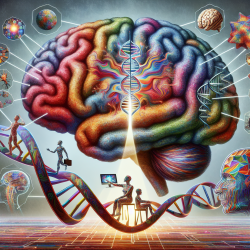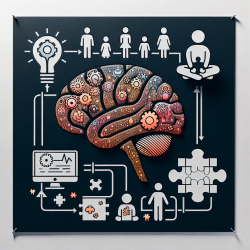Introduction
The human brain, with its remarkable cognitive capabilities, is a marvel of evolution. However, this evolution may come with a price. Recent research suggests that the same genetic factors that contributed to the rapid expansion of the human brain may also play a role in neurodevelopmental disorders such as autism and schizophrenia. This blog explores the intriguing concept of genomic trade-offs and how understanding these can enhance the skills of practitioners in the field of special education and therapy.
The Concept of Genomic Trade-offs
Genomic trade-offs refer to evolutionary changes in the genome that provide an overall benefit to a species, even if they result in disease in some individuals. A classic example is the sickle cell trait, which offers malaria resistance but can lead to sickle cell disease. Similarly, the genes that have driven human brain evolution may also contribute to cognitive disorders.
The Role of the Olduvai Protein Domain
The Olduvai protein domain family, formerly known as DUF1220, has been identified as a significant contributor to the evolution of the human brain. These domains are highly duplicated in the human genome and are associated with brain size and cognitive function. However, variations in their dosage have been linked to autism and schizophrenia, suggesting a complex interplay between cognitive benefits and disorders.
Implications for Practitioners
Understanding these genomic trade-offs can provide valuable insights for practitioners working with individuals with autism and schizophrenia. Here are some ways this knowledge can be applied:
- Personalized Interventions: By recognizing the genetic underpinnings of these disorders, practitioners can tailor interventions to the unique genetic profiles of individuals, potentially improving outcomes.
- Informed Decision-Making: Knowledge of genomic trade-offs can guide decisions about therapeutic approaches, ensuring they are grounded in the latest scientific understanding.
- Encouraging Further Research: Practitioners can contribute to ongoing research by participating in studies and sharing observations from their practice, helping to refine our understanding of these complex conditions.
Conclusion
The research on genomic trade-offs presents a compelling narrative about the costs and benefits of human brain evolution. For practitioners, this knowledge is not just academic; it is a tool that can enhance their ability to support individuals with autism and schizophrenia. By embracing the complexities of these genomic interactions, we can work towards more effective and compassionate care.
To read the original research paper, please follow this link: Genomic trade-offs: are autism and schizophrenia the steep price of the human brain?










